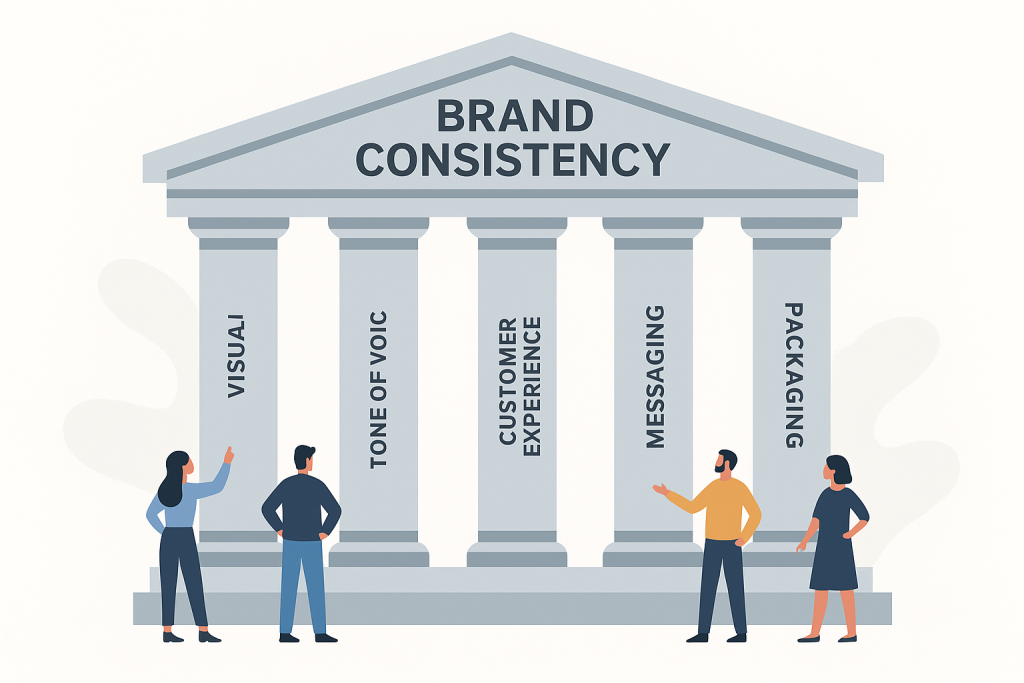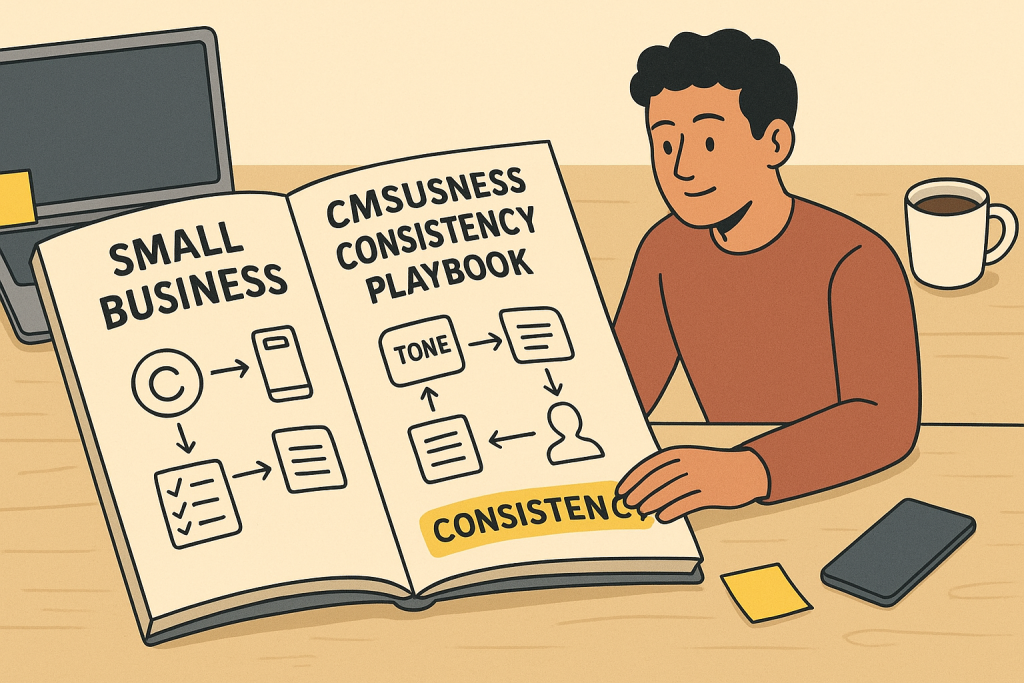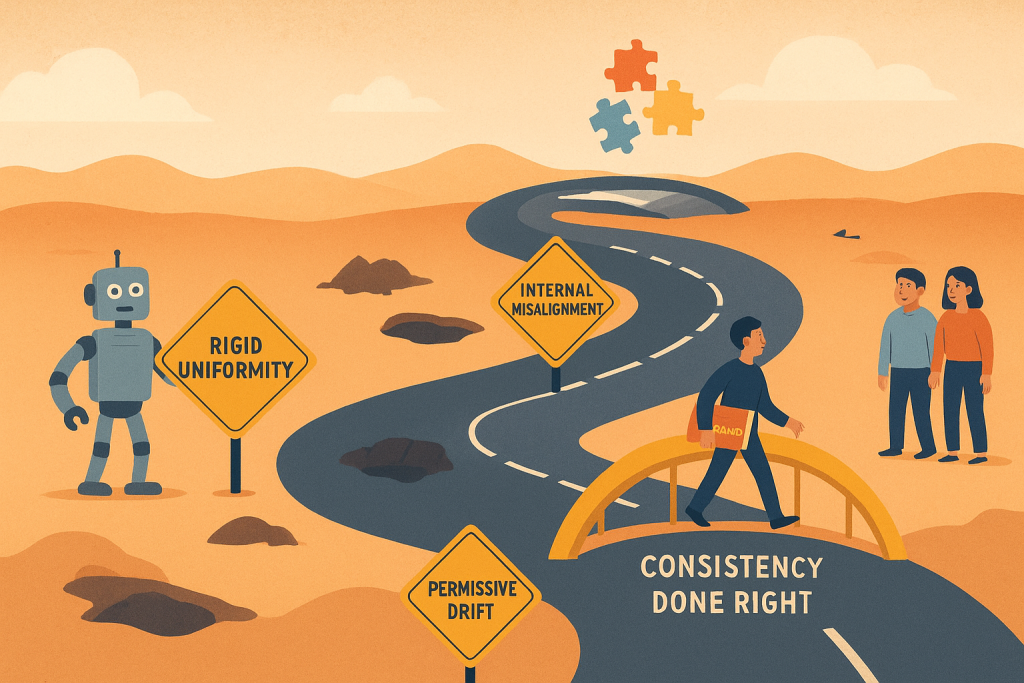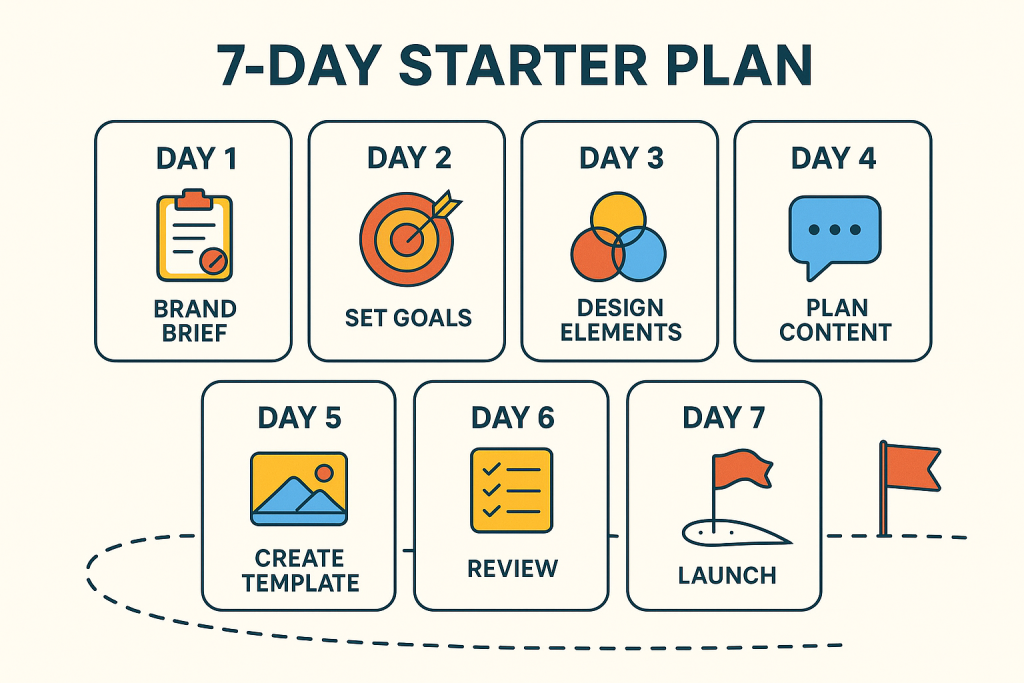Imagine walking into three different branches of the same coffee shop and finding three different logos, three different menus, and three different barista attitudes. Confusing, right? You might like the latte at one location, but after that scattershot experience you are less likely to recommend the brand or come back. That small moment captures the quiet power of consistency: when everything a brand does, from visuals and voice to service and product quality, lines up, customers understand what to expect, feel comfortable, and come back. When it doesn’t, trust drains away and even good offerings struggle to find traction.
This article digs deep into why consistency matters, what it actually looks like in practice, and how small businesses can make it their competitive advantage. You will get the psychology behind the idea, the practical building blocks (the “pillars” of consistency), realistic steps to put it in place, and how to measure whether your brand is actually delivering the same promise across touchpoints.
What consistency really means (and what it does not)
Consistency is not repetition for the sake of sameness, it is alignment. It means the story you tell, the way you speak, the visual cues you use, and the experience customers receive all point to the same idea of who you are and what you stand for. Consistency does not require sterile uniformity. Brands evolve, seasons change, and campaigns should vary, but evolution must be intentional and coordinated so customers still recognize the brand behind the change.
Why consistency works: The psychology and business upside
People prefer predictable experiences. Predictability reduces cognitive load: customers do not have to think hard to recognize and choose your brand. That cognitive ease breeds familiarity, and familiarity breeds trust. Trust speeds decisions, increases willingness to spend, and improves long-term retention.
From a business perspective, consistency multiplies the value of every marketing touchpoint. When visuals, messaging, and service all reinforce the same promise, each interaction strengthens brand memory. That makes acquisition cheaper (because word-of-mouth and recognition do part of the work) and lifetime value higher (because customers return and recommend you). In short: consistent brands convert better, retain better, and scale more easily.
The five pillars of brand consistency
Visual identity is the most visible pillar: your logo, color palette, typography, imagery, and layout choices. These elements must be applied uniformly so a customer recognizes you at a glance across website, social, packaging, and ads.
Verbal identity covers tone of voice, key messages, and the words you choose to describe your product and purpose. Whether a comment reply on Instagram, a product description, or a voicemail greeting, your brand’s voice should sound like the same person.
Experience consistency means how your customers feel when they interact with you. That includes customer service scripts, delivery times, packaging quality, and in-store interactions. Promising “premium” but delivering slow service breaks trust.
Operational consistency is the internal backbone: processes, policies, and quality control. If a product’s quality varies wildly from batch to batch, no amount of marketing polish will sustain loyalty.
Channel consistency demands that the brand feel coherent across platforms. Website layout, social content style, email tone, and offline materials should be different expressions of the same identity, not entirely different brands.

How to make consistency practical (a small-business playbook)
Start with a one-page brand brief. This is not a 60-page PDF; it is a single document that states your brand promise in one sentence, lists 3–5 core values, describes your target customers, and defines your voice in short phrases (e.g., “friendly, clear, helpful — never slangy”). That single sheet becomes the guide for every piece of content.
Create a simple style guide and a centralized asset library. Include exact color HEX codes, approved logo versions, primary and backup fonts, photo style examples, and a short set of voice examples for common scenarios (social reply, product page, email). Store these assets where everyone can access them.
Apply templates everywhere. Design a handful of templates for social posts, email headers, invoices, proposals, and packaging labels. Templates reduce accidental inconsistency and speed up execution.
Train your people. Run a short brand workshop for staff and contractors. Teach the “why” behind your identity so people do not just copy rules, they understand the purpose and apply judgment when a new situation arises.
Build simple checks into your workflow. Before a campaign goes live, someone does a quick “brand check” against the one-page brief: is the message aligned? Does the tone match? Are visuals using approved assets? Small, repeated checks catch drift before it reaches customers.
Allow controlled evolution. Schedule regular brand reviews (quarterly or biannual) where you intentionally evolve the look, voice, or experience rather than letting changes accumulate chaotically. Communicate any big changes deliberately to your audience so the shift is part of the story, not a surprise.
Start with one channel and master it. If resources are limited, pick your most important customer touchpoint (e.g., your website or in-store experience) and make it exemplary. Once that is consistent, replicate the basics to the next channel.

How to measure whether consistency is working
You can gauge consistency indirectly by tracking business signals: improvements in repeat purchase rate, conversion rate, average order value, net promoter score, and customer lifetime value are suggestive of increasing trust. More directly, run periodic brand audits: pick a sample of communications across channels and score them for alignment with your brief. Simple audits (a checklist of 5–7 alignment criteria filled every month) reveal drift quickly.
Customer feedback is priceless. Ask two short questions in post-purchase surveys: “Did this experience match what you expected from our brand?” and “How likely are you to recommend us?” The gap between expectation and reality reveals whether your brand promise is being delivered uniformly.
Common pitfalls and how to avoid them
The two big mistakes are rigid uniformity and permissive drift. Overly strict rules kill creativity and make the brand feel robotic. Too little governance lets every campaign invent its own identity. The answer is a light-but-clear governance model: give teams boundaries and templates, but also show them examples of how to creatively interpret the brief.
Another pitfall is internal misalignment: marketing says one thing, customer service does another, and product development overlooks the brand promise. Solve this by inviting cross-functional stakeholders into the brand brief creation and by assigning a brand champion who reviews high-impact projects.

A practical, one-week starter plan
In week one, write your one-page brand brief. In week two, pick one high-traffic touchpoint and make it match the brief exactly (website homepage, store signage, or Instagram grid). In week three, create or update one template and put it in a shared folder. In week four, run a small brand-check audit and solicit customer feedback. Small, consistent moves make the biggest difference.

Consistency as a habit, not a slogan
Consistency is not a design task you check off. It is a habit you build into how the business operates. When visuals, voice, service, and processes work together, your brand becomes easier to remember, easier to trust, and more likely to turn first-time buyers into repeat customers and advocates. Start with clarity, define what your brand promises and make that promise the filter for every decision. Do that, and consistency will stop being secret and start being your strongest asset.



